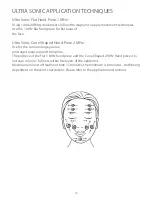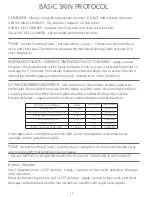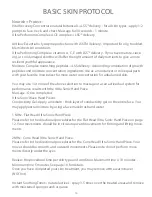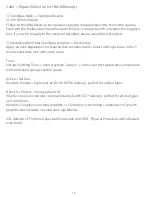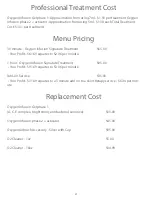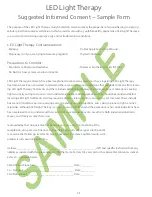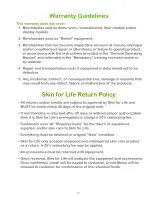
LED Light Summary
LED technology was originally developed to enhance the growth of plant tissue in space by
NASA’s Marshall Space Flight Center and Quantum Devices, Inc. of Barneveld, Wisconsin.
LED’s have a similar physiological effect on human cells as they do on plant cells. It is a nat-
ural photo – biochemical reaction that is similar to photosynthesis in plants, which triggers
the body to convert light energy into cell energy
Age defying - 680nm
(RED)
Oily/Troubled Skin - 460nm
(BLUE)
Skin Rebuilding - 800nm
(Infrared)
This remarkable technology, enhances the ATP (Adenosine Tri phosphate) within the mi-
tochondria of the cells which excites the first process of cell division. This non thermal re-
sponse relies on the visible light spectrum to interact with cells for a growth response.
RED LED Light is designed to trigger the first initial ATP response. RED LED Light should
always be the first light used on all skin types, conditions, and colors. Skin Indications - sun
damaged skin, mature, pigmented lesions, oily, troubled skin, capillary distention, and tem-
porary/chronic sensitive skins. How To Use - RED LED Light hand piece - use 90 seconds per
area, with overlapping 30% - 50% completing the process within 12 - 15 minutes before
transitioning to another LED Light color.
BLUE LED Light is suggested for oily and troubled skin conditions. The depth of this light is
important to minimize the activity of bacteria within the sebaceous gland that is associated
with blemished skins. Skin Indications - oily, troubled skin, blemished skin, and seborrhea
skins. How To Use - BLUE LED Light hand piece - use for 90 seconds per area with overlap-
ping 30% - 50% completing the process in 10 minutes.
24
Summary of Contents for Ultra Scrubber
Page 3: ...3 ...
Page 8: ...Ultrascrubber output portal 1MHz Ultrasonic output portal 2MHz Ultrasonic output portal 8 ...
Page 22: ...22 ...
Page 28: ...28 ...
Page 29: ...NO ANIMAL TESTING ...



